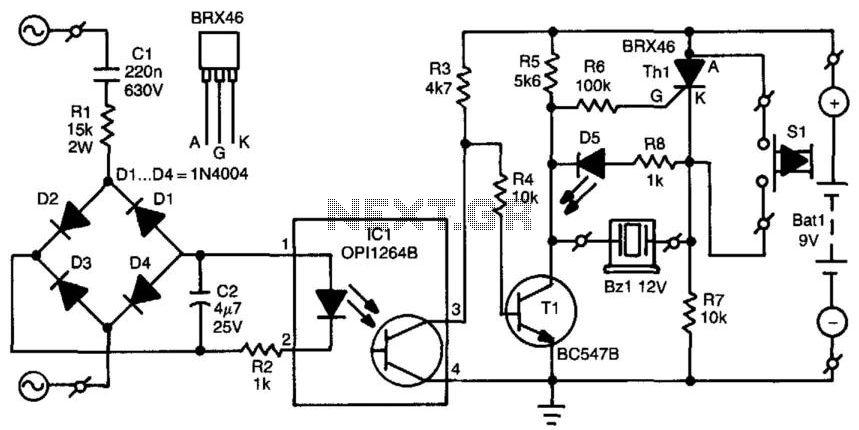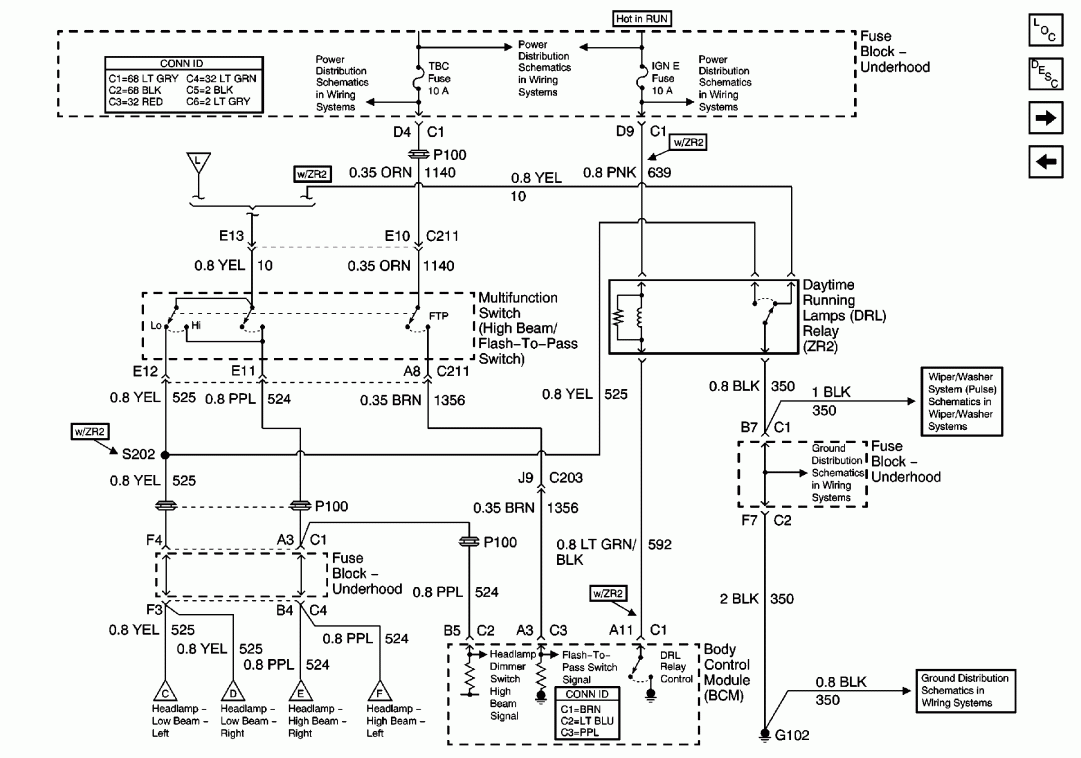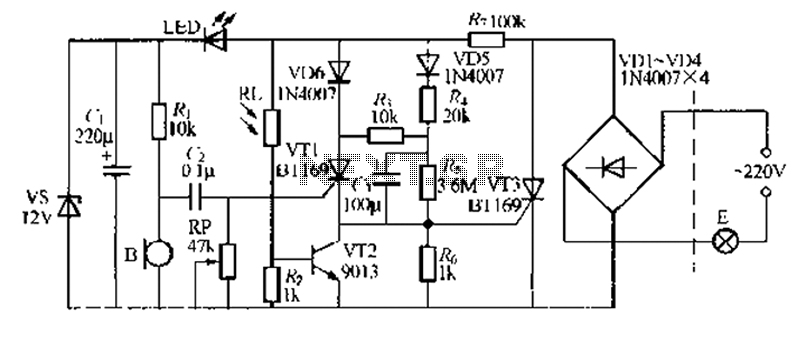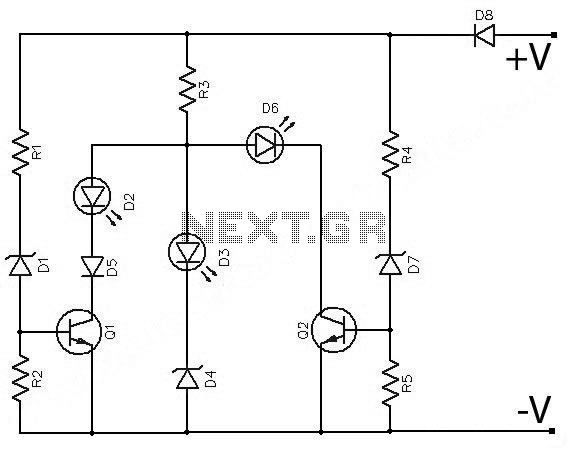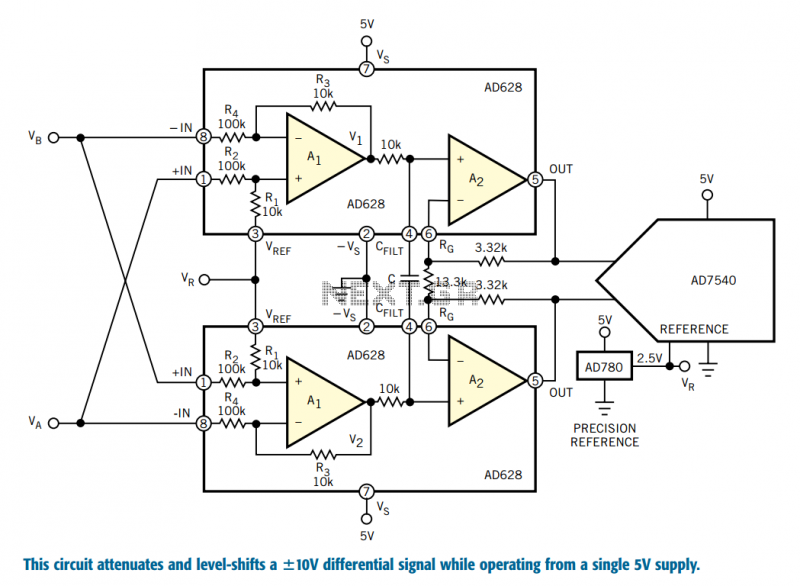
Sound Level Indicator
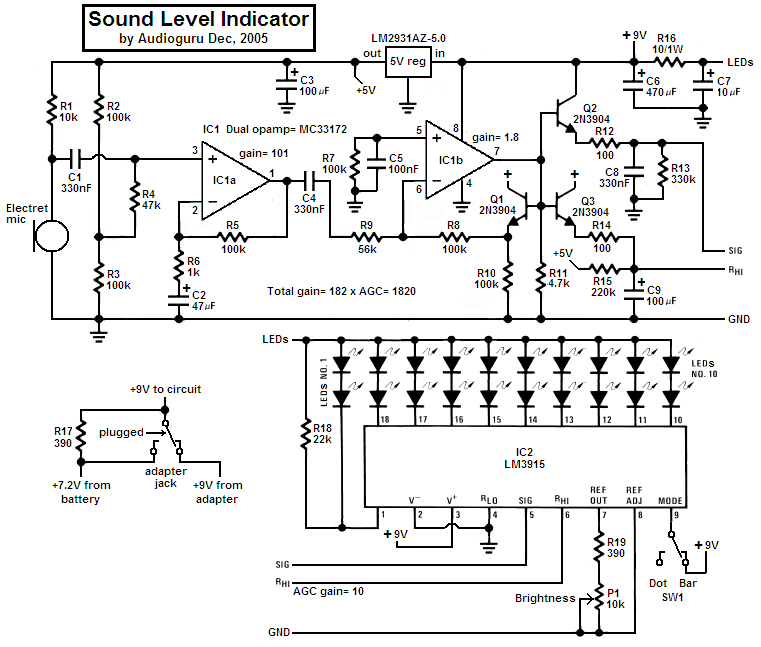
This project utilizes an LM3915 bar-graph integrated circuit (IC) that drives two sets of ten light-emitting diodes (LEDs) across a 30 dB range. The circuit is distinctive as it incorporates an additional 20 dB range through an automatic gain control (AGC), enabling heightened sensitivity to low sound levels while extending the range for loud sounds. Each LED operates at 26 mA with maximum brightness control, resulting in a very bright display. A switch is included to toggle between two modes of operation: a moving dot display or a bar display with variable length. The prototype is powered by a compact 9V Ni-Cad rechargeable battery, allowing for portability, and the battery is trickle-charged when the circuit is powered by a 9V AC-DC adapter. The second operational amplifier (op-amp) stage is a single-supply op-amp that functions effectively with both inputs and outputs at ground potential, serving as a rectifier driver with a gain of 1. It is biased at ground; due to its inverting configuration, when its input voltage swings negative, the output swings positive. A transistor (Q1) is included within the negative feedback loop of the second op-amp, acting as a voltage reference for two additional transistors. Transistor Q3 serves as the automatic gain control and also functions as a peak detector, albeit with slower charge and discharge times. It drives the resistor ladder of the LM3915 comparators, determining the sensitivity of the circuit. A resistor (R15) connected to +5V forms a voltage divider with the ladder's total resistance of approximately 25 kΩ, providing about +0.51V to the top of the ladder when very low sound levels are detected. In contrast, loud sounds cause Q3 to elevate the top of the ladder to 5.1V, thereby reducing sensitivity. The LM3915 regulates the current for the LEDs, eliminating the need for current-limiting resistors. In bar mode, when all LEDs are illuminated, the LM3915 may generate heat; thus, a 10 Ω, 1W resistor (R16) is incorporated to dissipate some of the heat.
The circuit design effectively combines audio signal processing with visual output, making it an ideal solution for sound level monitoring applications. The LM3915 IC is specifically designed to display analog signals, and its ability to drive multiple LEDs simultaneously allows for a clear visual representation of sound intensity. The automatic gain control mechanism is crucial for maintaining consistent performance across a wide range of input sound levels, ensuring that both quiet and loud sounds are accurately represented.
The choice of a single-supply op-amp for the rectifier driver stage simplifies the power supply requirements and enhances the overall efficiency of the circuit. The inclusion of transistors for voltage reference and automatic gain control adds a level of sophistication to the design, allowing for real-time adjustments in sensitivity based on the input signal. The use of a voltage divider to set the reference voltage for the resistor ladder is a practical approach that enables fine-tuning of the sensitivity threshold.
The portable power solution using a rechargeable battery, combined with the trickle charging feature from an AC-DC adapter, enhances the usability of the project in various environments. This design is suitable for applications such as sound level meters, audio equipment diagnostics, and educational demonstrations in acoustics. Overall, this project exemplifies a well-thought-out integration of electronic components to achieve a specific functional objective while maintaining user-friendly features.This project uses an LM3915 bar-graph IC driving two sets of ten LEDs for a 30dB range. The circuit is unique because it has an additional range of 20dB provided by an automatic gain control to allow it to be very sensitive to low sound levels but it increases its range 20dB for loud sounds. The LEDs are operating at 26mA each with the brightness control at maximum, which is very bright. The circuit has a switch to select the modes of operation: a moving dot of light, or a bar with a changing length. My prototype has a little 9V Ni-Cad rechargeable battery in it to be portable and the battery is trickle-charged when the project is powered by a 9V AC-DC adapter.
3) The 2nd opamp stage is a single-supply opamp which works fine with its inputs and output at ground and is used as a rectifier driver with a gain of 1. 8. It is biased at ground. Since it is inverting, when its input swings negative, its output swings positive. a) Q1 is inside the negative feedback loop of the 2nd opamp as a voltage reference for the other two transistors.
Hopefully the transistors match each other. c) Q3 transistor is the automatic gain control. It is also a peak detector but has slower charge and discharge times. It drives the comparators` resistor ladder in the LM3915 to determine how sensitive it is. R15 from +5V is in a voltage divider with the ladder`s total resistance of about 25k and provides the top of the ladder with about +0. 51V when there is a very low sound level detected. Loud sounds cause Q3 to drive the top of the ladder to 5. 1V for reduced sensitivity. 5) The LM3915 regulates the current for the LEDs so they don`t need current-limiting resistors. In the bar mode with all LEDs lit then the LM3915 gets hot so the 10 ohm/1W resistor R16 shares the heat.
🔗 External reference
The circuit design effectively combines audio signal processing with visual output, making it an ideal solution for sound level monitoring applications. The LM3915 IC is specifically designed to display analog signals, and its ability to drive multiple LEDs simultaneously allows for a clear visual representation of sound intensity. The automatic gain control mechanism is crucial for maintaining consistent performance across a wide range of input sound levels, ensuring that both quiet and loud sounds are accurately represented.
The choice of a single-supply op-amp for the rectifier driver stage simplifies the power supply requirements and enhances the overall efficiency of the circuit. The inclusion of transistors for voltage reference and automatic gain control adds a level of sophistication to the design, allowing for real-time adjustments in sensitivity based on the input signal. The use of a voltage divider to set the reference voltage for the resistor ladder is a practical approach that enables fine-tuning of the sensitivity threshold.
The portable power solution using a rechargeable battery, combined with the trickle charging feature from an AC-DC adapter, enhances the usability of the project in various environments. This design is suitable for applications such as sound level meters, audio equipment diagnostics, and educational demonstrations in acoustics. Overall, this project exemplifies a well-thought-out integration of electronic components to achieve a specific functional objective while maintaining user-friendly features.This project uses an LM3915 bar-graph IC driving two sets of ten LEDs for a 30dB range. The circuit is unique because it has an additional range of 20dB provided by an automatic gain control to allow it to be very sensitive to low sound levels but it increases its range 20dB for loud sounds. The LEDs are operating at 26mA each with the brightness control at maximum, which is very bright. The circuit has a switch to select the modes of operation: a moving dot of light, or a bar with a changing length. My prototype has a little 9V Ni-Cad rechargeable battery in it to be portable and the battery is trickle-charged when the project is powered by a 9V AC-DC adapter.
3) The 2nd opamp stage is a single-supply opamp which works fine with its inputs and output at ground and is used as a rectifier driver with a gain of 1. 8. It is biased at ground. Since it is inverting, when its input swings negative, its output swings positive. a) Q1 is inside the negative feedback loop of the 2nd opamp as a voltage reference for the other two transistors.
Hopefully the transistors match each other. c) Q3 transistor is the automatic gain control. It is also a peak detector but has slower charge and discharge times. It drives the comparators` resistor ladder in the LM3915 to determine how sensitive it is. R15 from +5V is in a voltage divider with the ladder`s total resistance of about 25k and provides the top of the ladder with about +0. 51V when there is a very low sound level detected. Loud sounds cause Q3 to drive the top of the ladder to 5. 1V for reduced sensitivity. 5) The LM3915 regulates the current for the LEDs so they don`t need current-limiting resistors. In the bar mode with all LEDs lit then the LM3915 gets hot so the 10 ohm/1W resistor R16 shares the heat.
🔗 External reference

